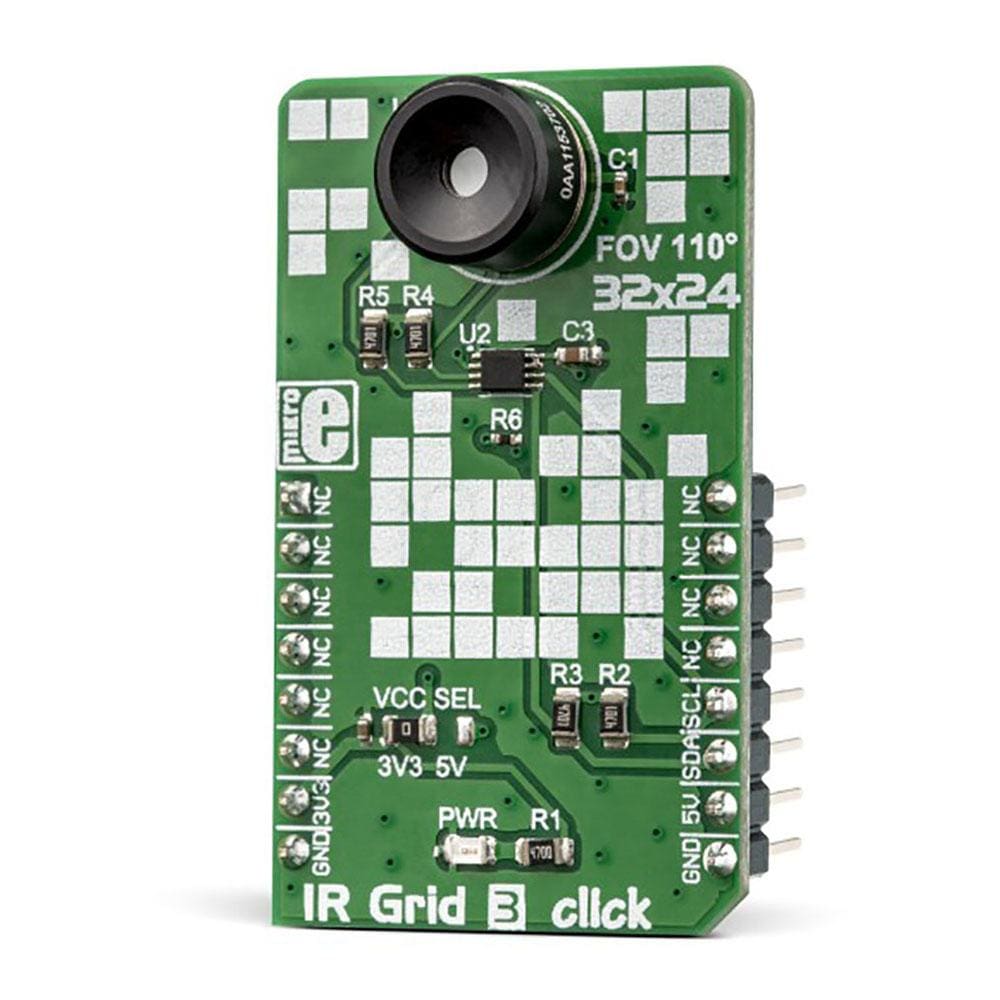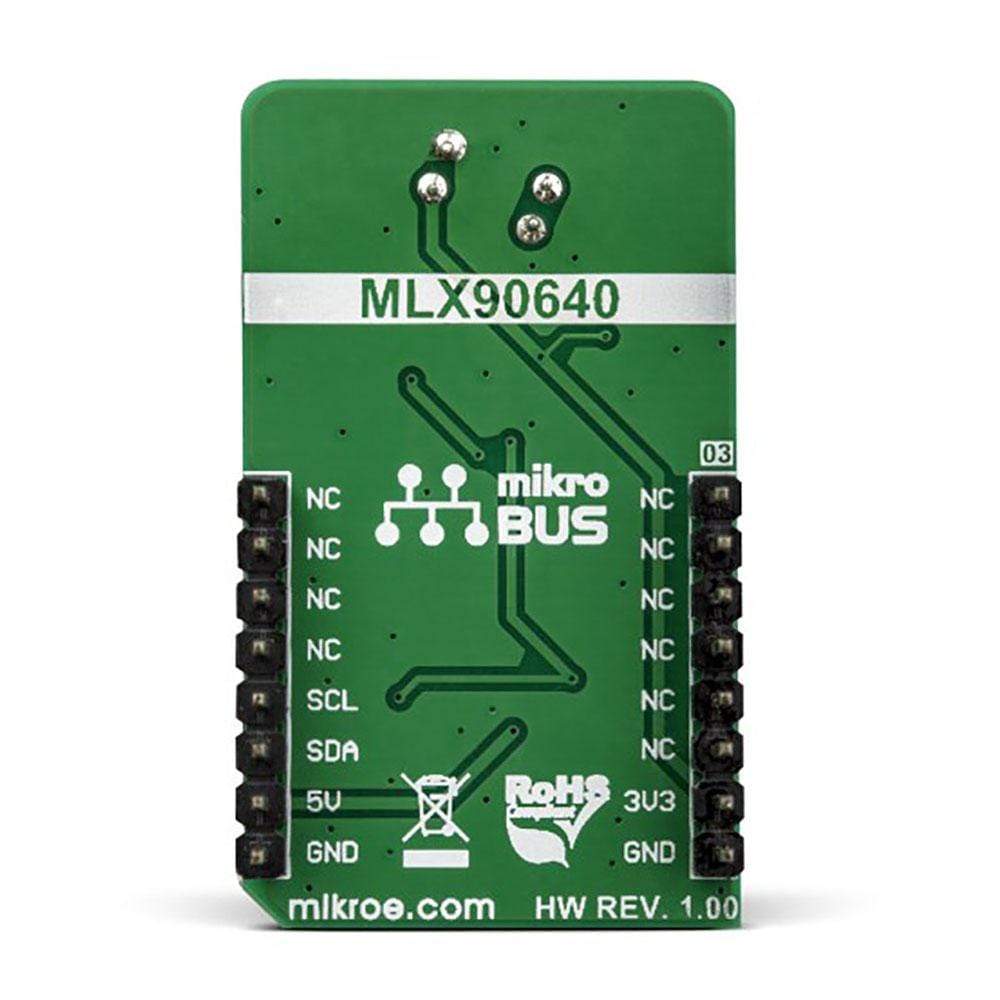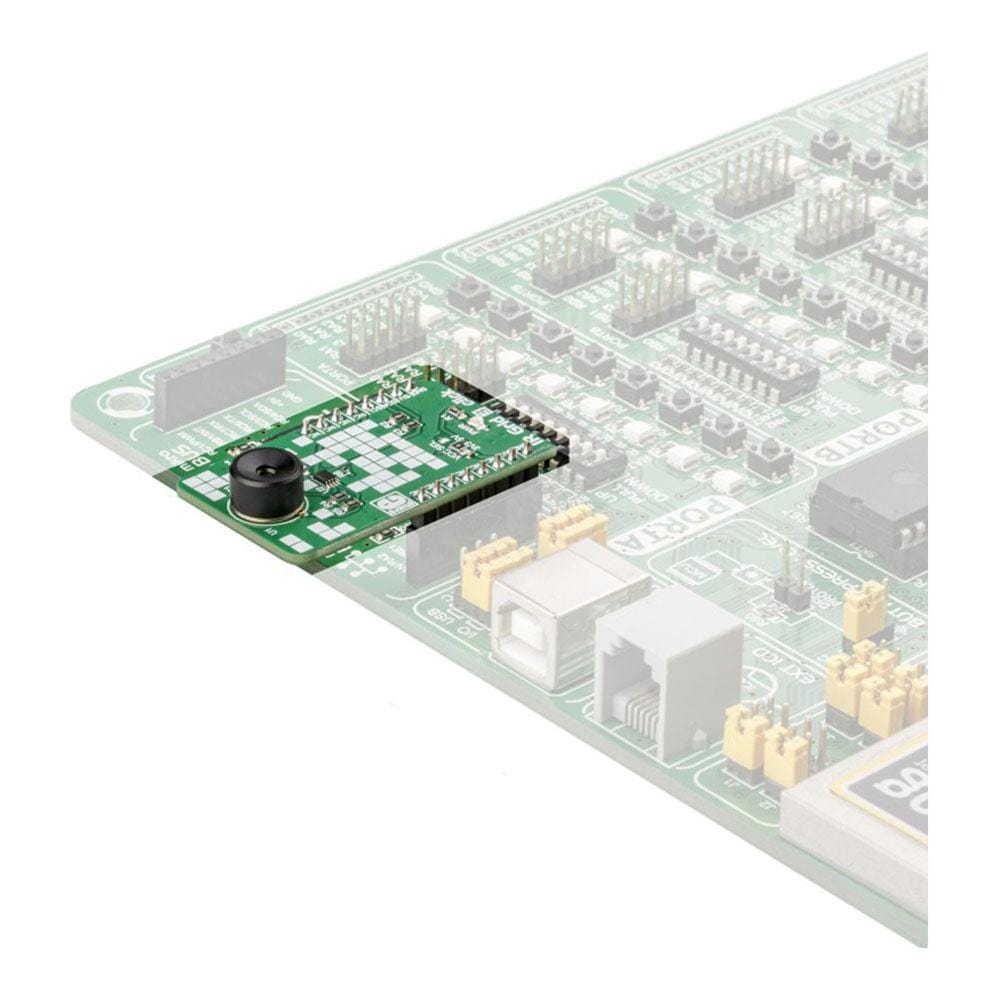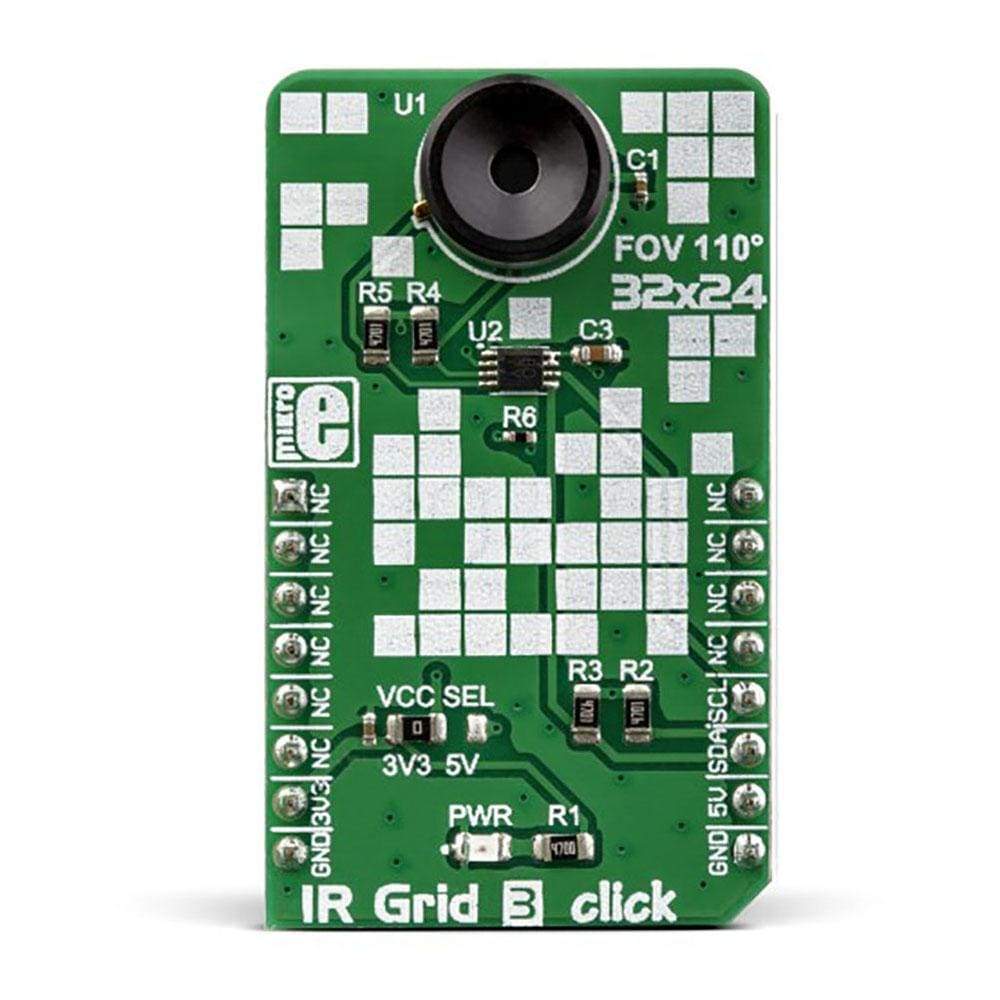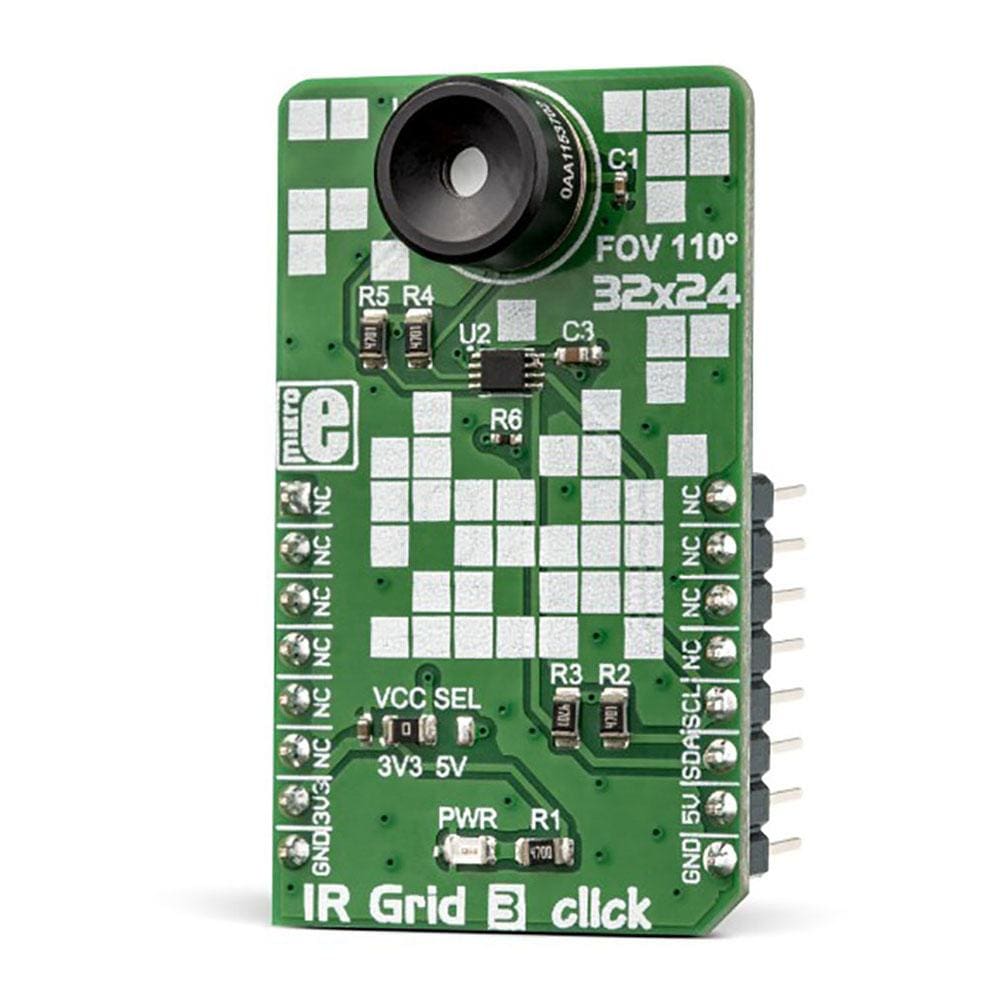
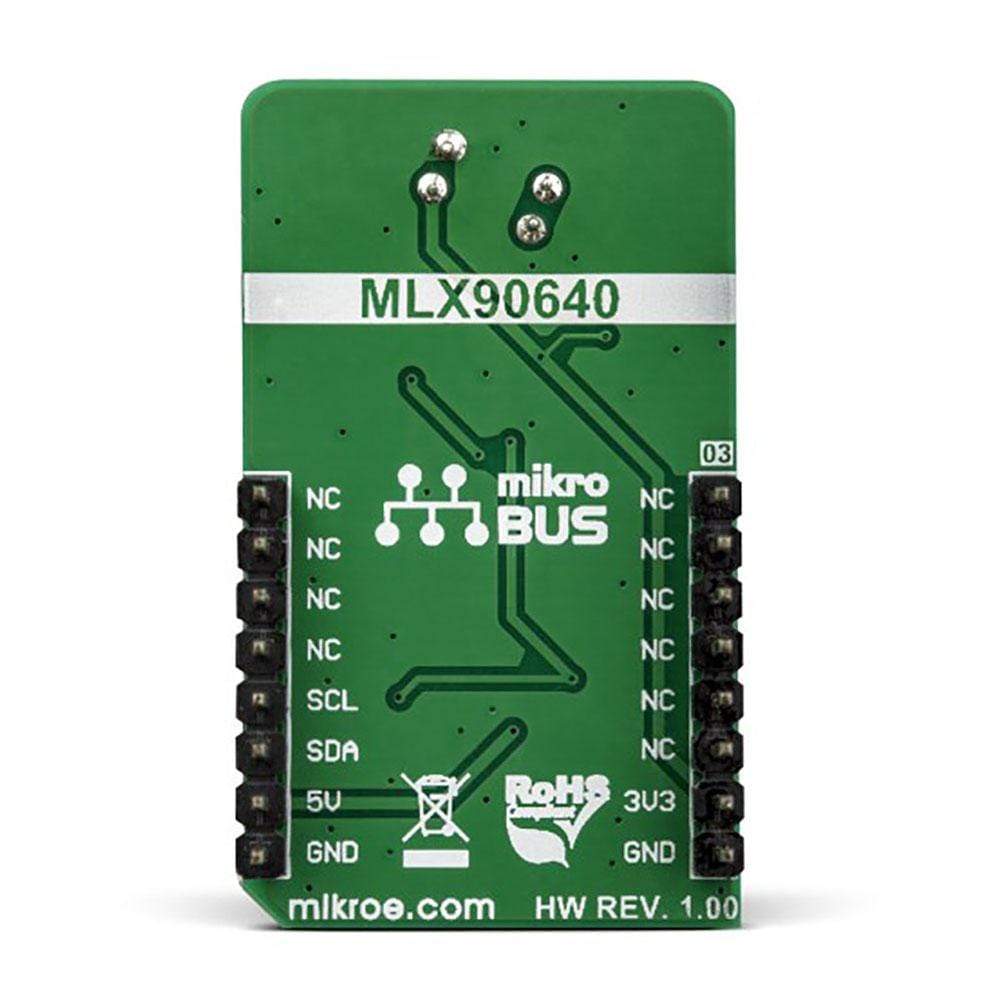
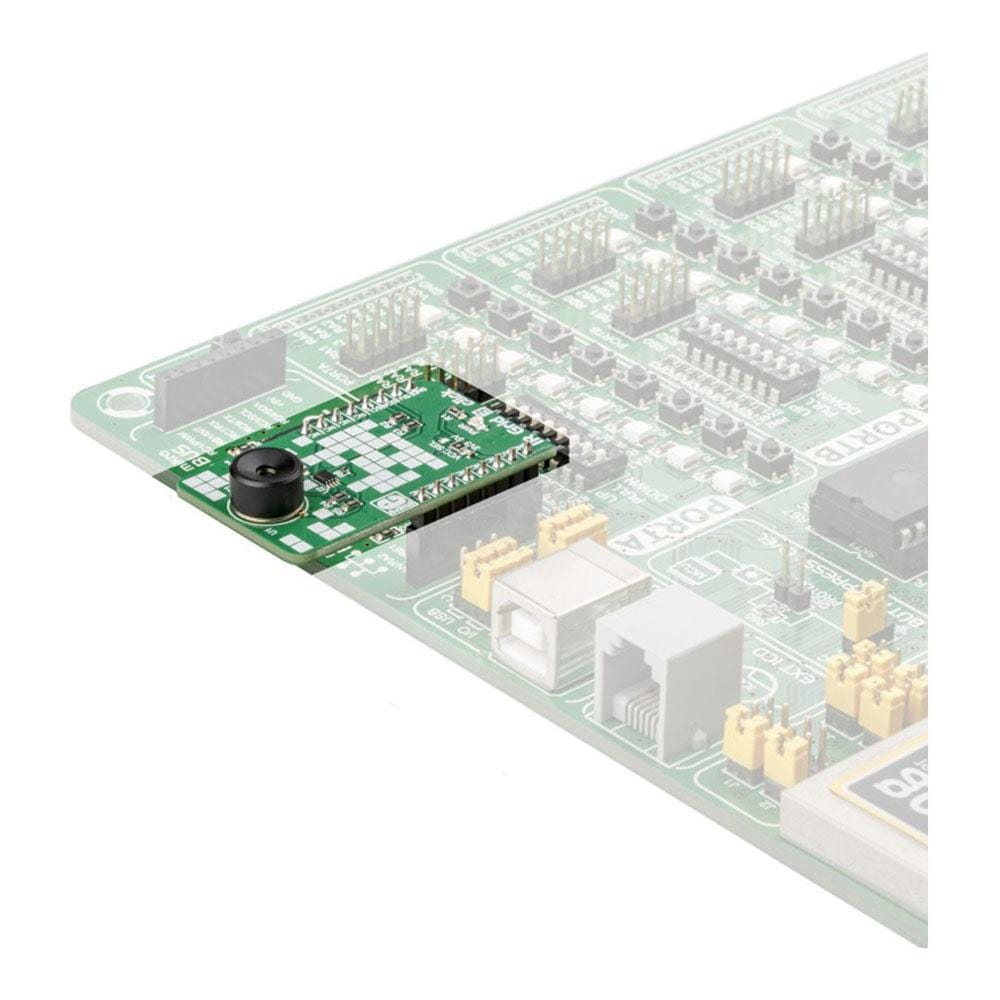
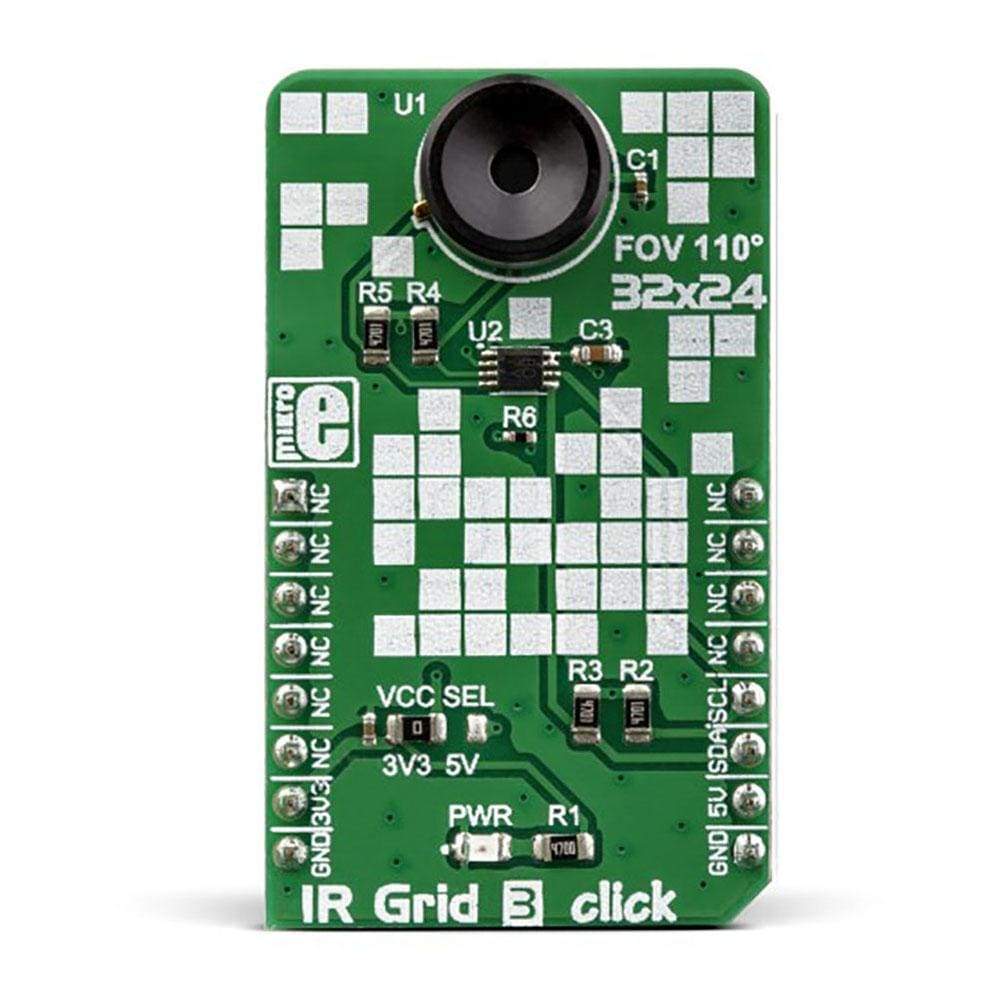
Overview
The IR Grid 3 Click Board™ is a thermal imaging sensor. It has an array of 768 very sensitive, factory calibrated IR elements (pixels), arranged in 32 rows of 24 pixels, each measuring an object temperature up to 300&Deg; C within its local Field of View (FOV). The Melexis MLX90640-BAA IR sensor used on this Click Board™ has only four pins, and it is mounted inside of the industry-standard TO39 package. The Click Board™ comes as a fully tested and approved prototype, making it a reliable device ready to use on the development board. The full package also includes the mikroSDK software and a library with all the functions.
The IR Grid 3 Click Board™ is suitable for a wide range of applications, including thermal scanners, precise contactless thermal measurement, thermal leaks in homes, industrial temperature control of moving parts, other types of heated object localization, human presence, and similar applications that require accurate contactless thermal measurement, or thermal imaging.
Downloads
Le Click Board™ IR Grid 3 est un capteur d'imagerie thermique. Il est doté d'un ensemble de 768 éléments IR (pixels) très sensibles et calibrés en usine, disposés en 32 rangées de 24 pixels, chacun mesurant la température d'un objet jusqu'à 300°C dans son champ de vision local (FOV). Le capteur IR Melexis MLX90640-BAA utilisé sur ce Click Board™ n'a que quatre broches et est monté à l'intérieur du boîtier TO39 standard de l'industrie. Le Click Board™ est fourni sous la forme d'un prototype entièrement testé et approuvé, ce qui en fait un appareil fiable prêt à être utilisé sur la carte de développement. Le package complet comprend également le logiciel mikroSDK et une bibliothèque avec toutes les fonctions.
Le IR Grid 3 Click Board™ convient à une large gamme d'applications, notamment les scanners thermiques, la mesure thermique précise sans contact, les fuites thermiques dans les maisons, le contrôle de la température industrielle des pièces mobiles, d'autres types de localisation d'objets chauffés, la présence humaine et des applications similaires qui nécessitent une mesure thermique précise sans contact ou une imagerie thermique.
| General Information | |
|---|---|
Part Number (SKU) |
MIKROE-3217
|
Manufacturer |
|
| Physical and Mechanical | |
Weight |
0.019 kg
|
| Other | |
Country of Origin |
|
HS Code Customs Tariff code
|
|
EAN |
8606018713738
|
Warranty |
|
Frequently Asked Questions
Have a Question?
Be the first to ask a question about this.

